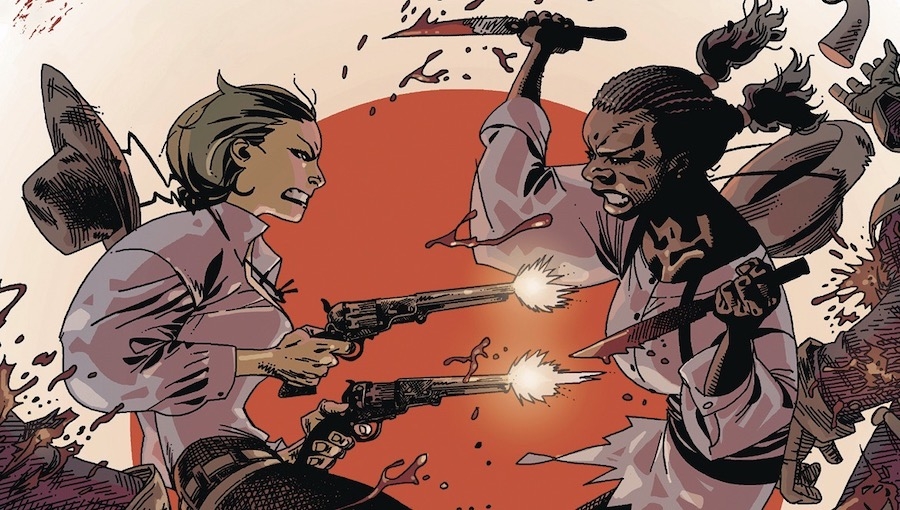Established within America’s most violent and chaotic war, the Civil War, writer Sydney Duncan weaves an interesting dichotomy for the characters within Kill Whitey Donovan. The narrative plot follows Anna Hoyt who searches to do what the book says: kill Whitey Donovan. Donovan is responsible for the suicide of Hoyt’s sister. In needing a partner, she pairs herself with Hattie Vergil, a woman enslaved by Whitey Donovan, who sojourns for her freedom.
While it’s reductive to say, this series manages to pair two Quentin Tarantino movies in one with its concept: two female protagonists hoping to kill a man who has wronged them, with one of them being an enslaved person who seeks to gain justice for their enslavement; however, it manages to be a nuanced version of Kill Bill meets Django Unchained. Rather than falling withing the genres of Black exploitation, Kung Fu, or a spaghetti western, Duncan adds a needed layer of drama and intimacy within the story.
With two of our protagonists being women, Duncan weaves her series’ thematic thesis with them. While this book is about women, it’s also about racial relations. This is best exemplified by the character of Hattie, a former slave whose journey aligns with Annie’s in a search to kill Whitey Donovan. Hattie is a representation of the external conflict of the Civil War, which is solely about an enslaved people having to fight for their basic human rights. Whilst Hattie is representative of the external, she and Annie also explore the internal struggle of womanhood. Clearly, the character of Hattie holds much exploration, but within the first issue, her character exploration must come preeminent through implication rather than narrative focus.
This is best encapsulated through the dynamic artwork by Natalie Barahona. Her linework captures an exaggerated figure for these characters which genuinely blurs the absurdity of the situation these characters find themselves. More so, it allows for somber notes where the characters are able to properly see each other and grow. In every way, this series is about providing a nuanced outlook on how two varying minorities had to overcome their boundaries – both literally and figuratively.
Creative Team: Writer: Sydney Duncan, Artist/Colorist: Natalie Barahona, Letterers: Troy Peteri, Cover Artist: Jason Pearson, Alternative Cover: Natalie Barahona
Publisher: Dark Horse Comics
Click here to purchase.

